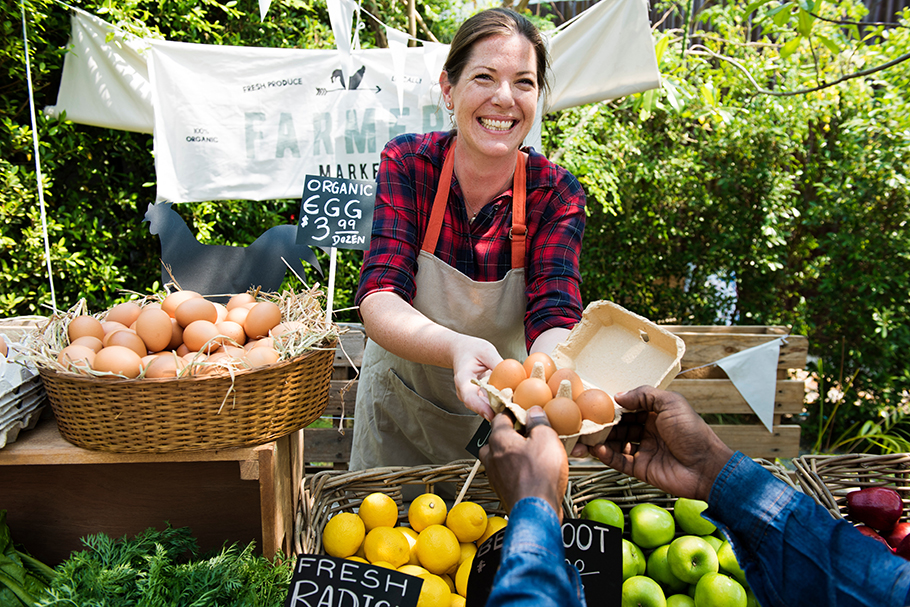
The Joy of Regenerative Agriculture
by CRARS staff member Sheryl Karas. M.A.

When you think about your climate change-influenced future (or fighting it), do you imagine abundance, joy, well-being and prosperity? Or do you imagine austerity—being forced to live a limited life, making do with less, never eating meat, recycling everything, and never going anywhere?
According to an October 2021 report by UNICEF(opens in new window), 95% of the 46,045 children surveyed said they are concerned about climate change and 73.5% believe it will affect their human rights. They worry about animals becoming extinct, weather extremes, food and water insecurity, poor air quality and harm to people’s health. 89% believe not enough is being done and that their generation is the one being sacrificed. In a similar survey by Bath University(opens in new window) of older young people (age 16-25) in 10 countries, 75% of those surveyed viewed the future with fear and 56% think humanity is doomed.
These are heart-breaking statistics. It means we have done an excellent job of educating young people about the horrors of what the world potentially faces without giving them enough insight into solutions they can participate in that will make a difference. And we certainly haven’t seen much focus on joyful changes individuals could make—the vast majority entail sacrifice and making do with less.
On the other hand, a Pew Research Center poll(opens in new window) from September 2021 showed that 80% of people of all ages surveyed say they are willing to make changes in how they work and live to reduce the effects of climate change. So what does this mean for regenerative agriculture?
Regenerative Agriculture Should Be Associated with a Positive Future of Abundance, Joy, Well-being, and Prosperity
Why? Because Regenerative Agriculture is inherently about all of this.
- Farming regeneratively can not only lower the carbon footprint of a farm by reducing the amounts of greenhouse gas emissions produced, it can help draw down excess carbon dioxide from the atmosphere and store it safely—and abundantly—underground where it supports the health of the soil and the plants grown in it. Farms who switch to regenerative approaches report that their soil carbon levels increase from an average of 1 to 2 percent up to 5 to 8 percent over 10 or more years. That doesn’t sound like much but it can add up to 25–60 tons of carbon per acre. Analysts at Project Drawdown estimate(opens in new window) that if the current spread of regenerative agriculture continues, that by 2050 carbon dioxide in the atmosphere will be reduced by 14.5–22.3 gigatons from the combination of sequestration and reduced emissions.
(By the way, that only includes regenerative annual cropping. If you add in other regenerative techniques like managed grazing, silvopasture, perennials, and intercropping the numbers go up to 73.4-124 gigatons. That’s enough, when combined with other actions, to make a very significant difference.)
- Regenerative practices increase biodiversity. Because the use of pesticides, herbicides, and synthetic fertilizer can be reduced or even eliminated, ecosystem functioning is restored. Regenerative farmers report(opens in new window) that they see species return to the land they did not see before and some even report that endangered species have rebounded in their vicinity. Biodiversity means the abundance of species of wildlife, birds, frogs, insects, plants, soil microbes, etc. in a region. Farmers who get to see this say it brings them joy as do other people who live nearby.
- Because of increased organic soil matter and reduced evaporation, regenerating the soil improves water infiltration and retention(opens in new window). The water that does run off is cleaner and safer and unlikely to pollute waterways. A lot of the same techniques reduce the amount of dust and air pollution a farm can produce. All of this increases farm resiliency and improves wellbeing in the local area as well as on the farm itself.
- Regenerative techniques may increase the nutritional quality of the food we eat(opens in new window) and also increases the wellbeing of local (and not so local) communities through increased access to fresh, healthy produce, eggs, dairy, and meat. Those that use diversified crop rotations and intercropping increase the abundance of different types of food available.
- Regenerative farmers who grow flowering pollinator habitat around their properties create beauty that increases the joy and well-being of all who see it.
- Regenerative farmers who successfully reduce or eliminate synthetic inputs like pesticides and fertilizers reduce their costs. That increases their profits and prosperity. Prosperous farmers have more money to hire others or to spend in their communities, potentially spreading prosperity beyond the farm.
“I wish that you could know how much fun it is, how great it is to work with friends and family, how good it is to be in touch with the changing of the seasons, how rewarding it is to see the condition of the soil improve, how peaceful it is to watch animals express their instinctive behavior, how pleasing it is to watch our community start prospering again . . .” —Will Harris, Wild Oak Pastures(opens in new window)
What Individuals Can Do
- Find out who is producing food regeneratively(opens in new window) and buy their products.
- Grow your own food regeneratively in your home or neighborhood garden. Learn how(opens in new window) and encourage other people to join you.
- Create or join groups interested in local food(opens in new window) and brainstorm how to increase the use of regenerative techniques in your area.
- Read articles and books, watch videos, or listen to podcasts(opens in new window) on regenerative agriculture. Share your favorites on social media.
- Support organizations that support Regenerative Agriculture (like the Center for Regenerative Agriculture and Resilient Systems(opens in new window)).
